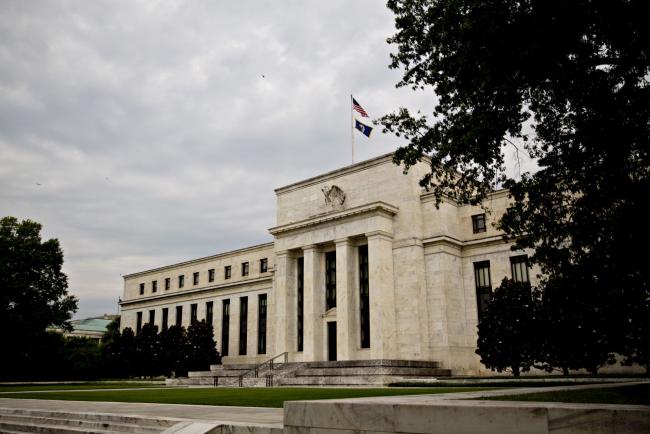(Bloomberg) -- Sign up here to receive the Davos Diary, a special daily newsletter that will run from Jan. 20-24.
The risk of a U.S.-Iran conflict is bringing fresh focus to the question of what Jerome Powell meant when he said it will take a “material” change in the outlook for the Federal Reserve to raise or lower interest rates.
The answer so far -- as investors wait to see how Tehran responds to the U.S. killing of its top general -- is that it will take quite a lot to meet that threshold, which the Fed chairman repeated at his press conference on Dec. 11.
Policy makers have signaled they’ll keep rates on hold all year and their reaction since news broke Friday of the fatal U.S. airstrike has been to play up the country’s economic resilience. One reason for that is the three rate cuts undertaken in 2019, taken out in part as “insurance” against unforeseen geopolitical developments on the global stage.
With U.S. stocks still close to record highs and oil prices well within the range of recent years, a material reassessment doesn’t look to be at hand even though Fed funds futures are all but pricing in a quarter-point cut by the end of 2020.
“They are staying put,” said Sonia Meskin, an economist at Standard Chartered (LON:STAN) Bank in New York, pointing to minutes of the central bank’s Dec. 10-11 policy meeting. “It would be dangerous for them to react to geopolitical events, I think, unless those entail clear economic consequences.”
The minutes, published Friday, stated that Fed officials “regarded the current stance of monetary policy as likely to remain appropriate for a time,” and keeping rates low “could be helpful for cushioning the economy.”
Several of them also spoke at an economics conference over the weekend in San Diego, reinforcing the message.
Cleveland Fed President Loretta Mester said in a Bloomberg TV interview that despite risks related to the Iran conflict, “fundamentally, the U.S. economy is sound.” Her Chicago counterpart Charles Evans stressed that the central bank’s previous rate cuts mean “risk management” is already incorporated into the current level of rates.
Oil Impact
Higher oil prices could be a risk -- though probably only with a sustained surge. They’ve gone up about 3%, or $2 per barrel, since the airstrike which killed Qassem Soleimani, according to futures contracts traded on the New York Mercantile Exchange.
Another $20-30 increase per barrel would have “significant negative ramifications for the global macro outlook,” Morgan Stanley (NYSE:MS) analysts led by Chetan Ahya wrote in a report. But they added that “the U.S. is less exposed to oil price shocks as compared to before due to rising U.S. oil production and a narrower oil trade balance.”
Dallas Fed President Robert Kaplan, whose district includes the nation’s largest oil producers, suggested a bit of volatility in financial markets resulting from geopolitical tensions might not be a bad thing.
“A repricing of risk assets could be healthy,” Kaplan said in an interview Friday on the sidelines of the San Diego conference. “What I would watch for is a severe tightening in financial conditions, particularly the availability and cost of money.”
That all indicates central bankers will probably stay focused on what’s happening in the broader economy -- and in particular, whether there are signs that growth is slowing materially -- unless there’s a “major move” in the stock market, according to Michael Gapen, chief U.S. economist at Barclays (LON:BARC) Plc in New York. “And you’re unlikely to get that kind of a sell-off unless other things are going wrong as well.”
